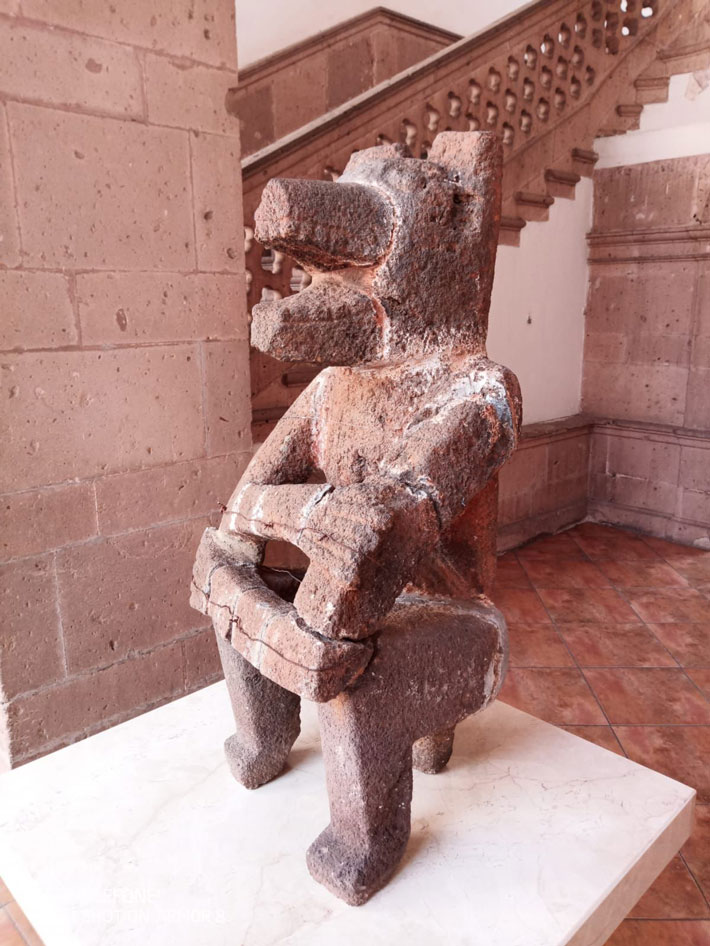Ancient “Coyote-Man” Sculpture Recovered in Mexico
Archaeologists from the Instituto Nacional de Antropología e Historia in Mexico have recovered an important artefact of pre-Hispanic culture: a monumental coyote-headed figure perched on a throne.

Known as the coyote-man from Tacámbaro, an area in the central Mexican state of Michoacán, the sculpture was discovered almost 30 years ago during construction work in the municipality.
The artefact was held in a private collection until it was recovered by the NAH Michoacán Center through a Mexican federal law that regulates the ownership and preservation of national cultural property.
The Llanos de Canícuaro neighbourhood in Tacámbaro, where the coyote-man was first unearthed, was the site of the Tarascan city of Tzintzuntza, meaning “place of the hummingbirds” in the Purépecha language.
Representations of coyote spirits were prolific in the ancient settlement, though few were as tall or intricately carved as the sculpture recovered.
In a statement, INAH said its specialists are now assessing the state of the work, as a series of fractures were sustained during its rough extraction by the municipality.
Once the conservation is executed, it’s expected to “have a place of honour within the archaeological collection of the community museum of the city council,” according to the institute.
On the importance of the sculpture, archaeologist José Luis Punzo said, “We know that the last lords of Tzintzuntzan, who wrote the Relacion de Michoacán, were the so-called uacúsecha, the ‘lineage of the eagle’.
Next to this was another large city on Lake Pátzcuaro, Ihuatzio, which means ‘place of coyotes’, where most of these sculptures have been located.”
He added: “One of the hypotheses is that the coyote-man sculptures could represent a dynasty that ruled this place, even before the Uacúsecha history was written.”





